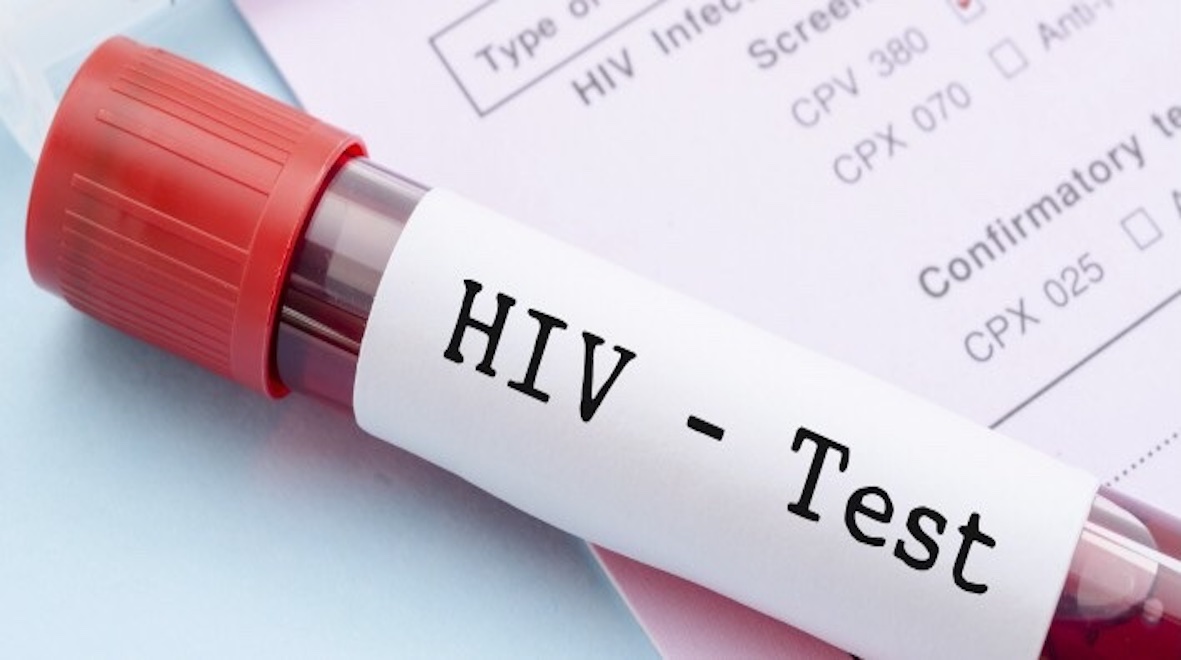
There are currently 38 million people infected with HIV worldwide with up to a million deaths each year. During National HIV Testing Week, we hear from Dr. Catherine Kibirige who has developed a highly sensitive HIV-1 test that can detect a single infected cell with high precision.
Meet Dr. Fred Nsubuga, he manages the Diagnostics Laboratory at Jinja District Hospital in Uganda. His laboratory is not equipped for HIV-1 treatment monitoring, so, when patients come in who need a viral load test, he must collect, process and store their blood samples, batch them together, then send them on a truck to the national HIV testing laboratory in Kampala, the capital city, 44 miles away. Despite the availability of this state-of-the art facility which boasts a Roche Cobas 8800™ high-throughput instrument with a good computer-based laboratory management system, it can take months for the results to get back to him. Sometimes, they go missing.
Meet Prossy Nantale, she lives in a fishing village off the coast of Lake Victoria. It is a two-hour canoe trip to Jinja. The doctor gives her a 6-month supply of generic drugs when she goes in for her HIV visits. This is when he gives her the results from her last viral load test and draws her blood for another test. If the results are mislaid, it will be a year, maybe more, before she knows whether she has developed drug-resistance and if she needs to change her treatment regimen. She is a widow who cares for an elderly mother and three children. She often skips her medicine and does not keep to her doctor’s visits very well, because the district hospital is so far away, and she needs the little money she has for other things. She doesn’t go unless she is very sick or if she is in Jinja for something else and can afford the visit.
Meet Jalil Ahmed, he is a clinician in Ratodero, a small town in southeastern Pakistan where there is a growing HIV-1 outbreak. There is no treatment or testing facility for children here or in the nearest large town, Larkana, 20 miles away. Children must go to Karachi, 300 miles away from treatment and monitoring. They are not diagnosed early, and drug-resistance is not detected until it is too late. Their families simply cannot afford the trips to Karachi or the medications.
A surge in drug resistance
There are currently 38 million people infected with HIV worldwide with up to a million deaths each year. There is a very concerning increase in the development of HIV-1 drug resistance in low and middle-income countries. Over 80% of HIV positive individuals know their status and are on treatment in East and Southern Africa for example. Less than 45% of them have access to treatment-monitoring, however, which is causing this surge in drug resistance. Up to 69% of infants born to HIV positive mothers harbour strains that are resistant to the only drugs readily available to them in the worst-affected areas. In Pakistan, there are approximately 190,000 HIV positive people. Only 21% know their status, of whom only 12% are on treatment. There has been a 385% increase in HIV-related deaths in Pakistan since 2010 as a result.
My name is Dr. Catherine Kibirige. I am a scientist with over 20 years’ experience in HIV research. These are the stories that drive my work and keep me up late in the laboratory. Prior to beginning graduate studies, I worked under the Ministry of Health in Uganda on a study of HIV/AIDS and related STDs. My PhD thesis work was conducted within the Department of Molecular Microbiology and Immunology at the Johns Hopkins Bloomberg School of Public Health. Baltimore, MD, USA. I drew my patient samples from and worked alongside the Multi-Center AIDS Cohort Study (MACS) Washington/Baltimore arm. I then went on to conduct a post-doctoral fellowship with the US Military’s HIV Research Program working within the Technology Assessment Laboratory at the Walter Reed Army Institute of Research in Maryland, USA. I worked on a series of projects developing molecular diagnostic assays capable of early HIV detection. I attempted to cover all known subtypes and variants of HIV-1. Towards the end of this position, I wrote a series of proposals and successfully obtained a technology acceleration seed grant through the Johns Hopkins technology transfer department which I used to further optimize the assays and broaden their utility during a second postdoctoral position back at Johns Hopkins. I presented my work at the Annual Vaccine Research and Development conference in Baltimore in November 2015, which led to my eventual position with what was formerly the International AIDS Vaccine Initiative (IAVI), Human Immunology Laboratory here at Imperial College London.
Public health concern
HIV-1 suppression, following initiation of combination antiretroviral therapy (cART) to levels that are undetectable by commercial viral load assays (i.e., below 20 to 50 copies/ml in plasma), is significantly associated with longevity and improved quality of life. Moreover, since successfully treated people do not transmit the virus, early and sustained viral suppression is an important public health tool in the prevention HIV spread. Current WHO guidelines strongly recommend initiation of cART as soon as possible after diagnosis (WHO 2016). Current HIV-1 viral load assays, which are used to monitor treatment, range from £50 to £100 a test. The assays require a cold-chain, specialized equipment, and specially trained staff. The more widespread dissemination and use of low-cost generic first-line HIV-1 drugs means that treatment is becoming more widely available worldwide, but the lack of adequate monitoring is causing the emergence and circulation of treatment-resistant strains of the virus as we have seen in the case studies above. This is a major public health concern.
Despite many years of calls in the literature, to validate and utilize low-cost laboratory developed assays (LDAs), such as mine, for treatment monitoring and despite the development of programs that facilitate the validation of such assays at the same stringency as commercially approved assays, wide-spread use of LDAs for treatment monitoring has not come to fruition because it is a long-winded, expensive, and painstaking process.
It has become my obsession
Over the past 10 years, I have become frustrated with this scenario and have determined to do it myself. It has become an obsession. I have developed, patented, and published a novel assay for the quantification of HIV-1 DNA in cells with a sensitivity of a single infected cell or 3 copies of DNA at the 95% confidence level. Unlike competing laboratory-developed assays, all major HIV-1 subtypes, and a wide range of recombinants from a 127-member internationally recognized diversity panel were detected and accurately quantified. The assay has been evaluated according to international guidelines using an extensive diversity panel of HIV-1 strains provided by the external quality assurance program oversight laboratory (EQAPOL) and the AIDS Reference Reagent Program. The assay will have utility in HIV-1 treatment monitoring and in cure and prevention research.
Clinically approved HIV-1 plasma viral load assays are not approved for detecting HIV-1 DNA in cells. The gold-standard assay for measuring the levels of integrated HIV-1 in cells, the quantitative viral outgrowth assay or QVOA, is very complicated and expensive. Laboratory-developed (or homebrew) assays, like mine, are playing an increasing role in the field. My work and that of others has shown that HIV-1 DNA can be readily detected in peripheral blood mononuclear cells (PBMCs) even when plasma viral load is undetectable. Using alternative cell-based assays such as the one I have developed, could provide a more efficient tool for large-scale patient screening and research because such assays can be tailored to the available specimens and can be run at lower cost (~<£4 per test). I intend to validate my assay’s use as an alternative to the current HIV-1 viral load assay. I intend to test the ability of the low-cost ambient-temperature prototype kit I am developing to provide an efficient tool for treatment-monitoring in resource-limited settings.
I am truly grateful to Dr. Jill Gilmour and IAVI for giving me the opportunity to complete the validation and patenting of these assays and for the Imperial College Enterprise team for taking me under their wings and engaging me in the commercialization process.

Well done, Dr. Kibirige! Sixty years ago I was a medical officer in Soroti, Teso district, Uganda, – one of only three doctors trying to cope with the illnesses of a half million people!
I occasionally encountered emancipated patients, truly walking skeletons, who invariably died of tuberculosis. These were not the usual TB cases that I visited weekly in and around Teso and Sebei,
handing out PAS and INAH .
We did not know about HIV in those days.
I graduated from St. Mary’s Hospital Medical School in 1959 and my family and I now live in Western Canada.
I shall never forget Uganda and its beautiful people.
Wow,that’s awesome. Do you still visit Uganda? I will keep you updated on the progress of the venture if you like. You could follow me on twitter @CatherineKibir1 or via linked in – Dr. Catherine N. Kibirige if you are on those platforms. Thanks 🙂